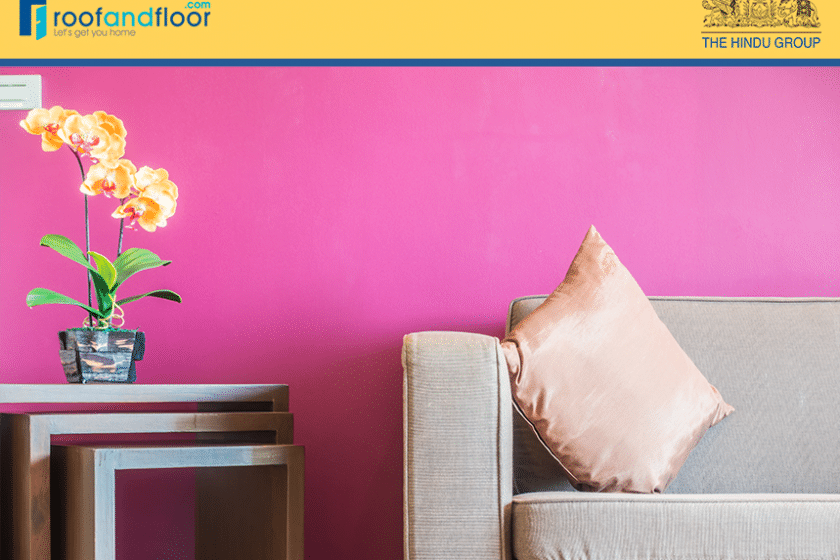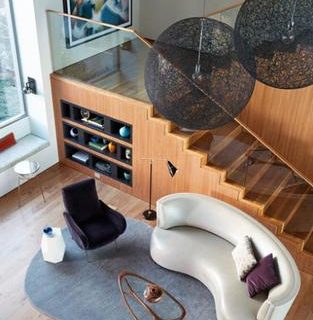Ever wondered why everything in KFC is red?
It is because the colour red induces hunger, making us feel the need to eat.
Just think about it! If a colour can trick our brains into buying a bucket of chicken wings, imagine how colours can influence us in the spaces we live in?
Colours at home
Most people find it difficult to grasp the importance of colours in determining things like our moods, state of mind, and level of motivation. By surrounding yourself with the right colours, you can effectively control how you feel and can induce positivity in your life.
And given that most of us spend a large part of our lives at home, it is important to put a fair bit of thought into the colours that make up your home.
But before you start painting anything, here are a few colour-related terms that you need to be aware of.
- Hues – A hue is a colour. So, red is a hue, and so is blue. The value of the hue refers to how light or dark that hue is.
- Saturation – Saturation refers to how dominant a hue is. For example, if you have a room full of reds and pinks, the colour pink will be more dominant.
- Intensity – This refers to the brilliance of a colour. A colour like cobalt blue or bright red is more intense than a subdued colour like a light yellow.
Now that you understand what these terms mean, here are a few tips to help you paint your home.
Choose the colour last
When painting a room, most people pick the colour first and then design the interiors to suit that colour. This can be problematic as it is difficult to find fabrics and other elements in the room to complement the walls.
Instead, paint the room after you have set everything up already. This way, you can take your colour cues from the fabrics and the trim in the room. So, if the interiors consist of more subtle, subdued colours, consider painting the walls in a similar hue to keep that peaceful, relaxed feeling.
Don’t pick your favourite colour!
A common mistake made by people when painting their room is choosing their favourite colour. However, your favourite colour may not project the mood or feeling that you are looking for.
Think about your bedroom, for instance. Do you want it to be a place of calm serenity or something more exciting and intimate? Softer, cooler colours (blues and greens) create a more relaxed atmosphere while stronger colours (bright red) can heighten the drama.
Consider the whole house
When painting your home, consider the entire unit as one massive work of art. You need to examine how colours flow from one room to another and how they interact with the colours in an adjacent room.
When you stand in a room and visualise the colours, make sure you can see a bit of the adjacent room and picture how the colours in these two rooms would complement each other.
Try a monochromatic scheme
You will be surprised at how amazing a room can look when painted with a single hue. When painting with a single hue, be sure to apply different finishes to different parts of the room for a more diverse, yet cohesive, look.
Even if your wall and trim are of the same hue, using different finishes is a simple, but effective way to revolutionise the look of the place.
The colour wheel
Keep these 4 tips in mind when painting your home to ensure that you create a lively, uniform look. Besides these tips, be sure to refer to the colour wheel while painting your house.
Colours that are close to each other on the colour wheel are analogous and placing these colours together will cause one of them to stand out a lot more. However, colours like red and green, which are on opposite sides of the wheel will nicely complement each other.
Another factor you must take into consideration is the warmth or coolness of a particular colour. Painting with cooler colours like blue, green, or purple, will make a room appear airy and larger than it is. Using warmer colours like red or orange will give the room a more vibrant look and stimulate its occupants.
Select the right paint
Finally, it is important to choose the right type of paint when doing up different areas of your house. The two main types of paint are oil and latex paints, and you need to select a paint type based on the surface being painted.
- Latex paints are easier to clean up and are far more durable than oil paints. They are quite fade-resistant, and it’s highly recommended that you use latex paints to colour your walls.
- Oil paints, on the other hand, are ideal for trim and other wooden surfaces. They tend to cover up stains and chips in the wood a lot more effectively than latex paints. But remember that oil paints take longer to dry, so paint accordingly.
Be bold
When you are painting your home, be bold and try different colour combinations to see what works best for you. If you’d like, start small by painting only one wall in the bathroom and slowly work your way towards the other walls in the house.
By trying different combinations, you will eventually end up with something that is unique and truly you.






